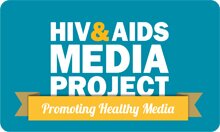Education
Behavior change in HIV prevention
Safe sex and HIV prevention is not only about giving people condoms and ARVs. The SA National Department of Health's "ABC" preventative strategy (Abstain, Be faithful, Condomise) illustrates that HIV prevention cannot focus solely on medical interventions (condoms) or social and behavioral change (be faithful). Both dimensions need to be included in addressing HIV.
Recent campaigns have recognised the need to try and change risky behaviors which potentially expose people to HIV. Scruntinize is an example of a campaign which aims to change people’s behavior through alerting them to the risks of MCP.
Major educational campaigns have included:
Beyond Awareness
The Beyond Awareness campaign (1998-2000) targeted young people through a multi-media campaign that communicated key messages around the HIV/AIDS epidemic. The campaign promoted symbols like the red ribbon logo and the AIDS toll-free helpline phone number. It also provided leaflets, posters, booklets and other "tools for action" that supported governmental, non-governmental and community-based organisation efforts to engage with the epidemic and promoted the free National AIDS helpline, established in 1992. The campaign ran on an annual budget of around R13-million.
Soul City

The Soul City project uses television and radio dramas and print material, to promote public awareness around health issues, including HIV/AIDS. Each series deals with three or four key health or social issues. HIV/AIDS has been a key issue in each series since it began. Each series includes 13 prime-time television episodes, 45 15-minute radio dramas, three widely distributed colour booklets, an advertising campaign and an advocacy campaign, according to Soul City.
loveLife

The loveLife campaign was launched in 1999. The campaign aims to "brand" safe sexual behaviour as part of popular youth culture and so reduce the HIV-infection rate among young South Africans. LoveLife strives to promote communication about sex and encourage informed decision-making. The programme includes nationwide media strategies including a prominent billboard campaign that aims to promote sexual responsibility. LoveLife also offers service and support programmes that assist youth centres and public clinics. Lovelife continually monitors and evaluates the campaign's effectiveness. The campaign's major funders are the Henry J. Kaiser Family Foundation and the Bill and Melinda Gates Foundation. The SA government provides approximately 12% of loveLife's current annual budget of around $20-million. (Read more here)
Khomanani — Caring Together
The SA government's HIV/AIDS communication campaign, "Khomanani — Caring Together", aims to "move the nation to act by informing, inspiring and empowering individuals, civil society, business and government, through the effective and efficient use of media". The campaign focuses on youth prevention, support for vulnerable children, living positively with HIV, effective STI treatment, TB control and supporting health workers.






